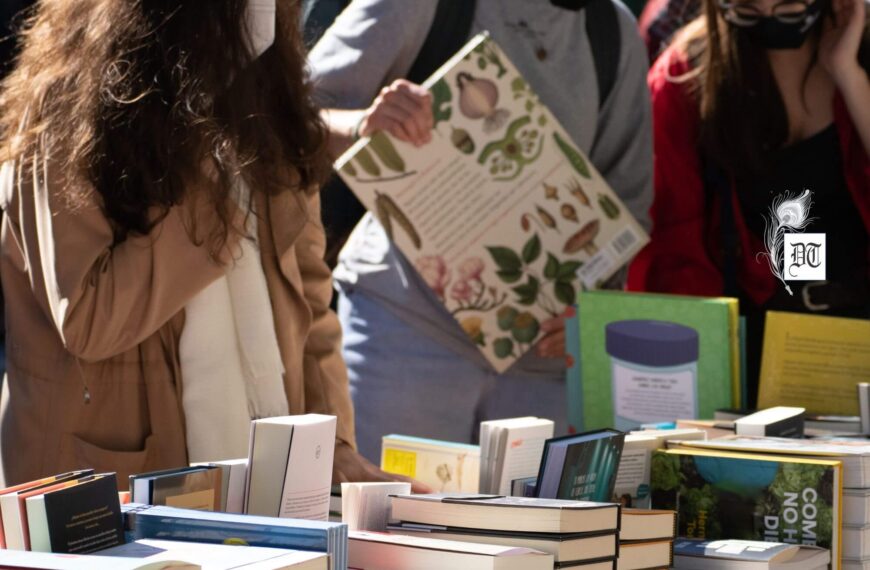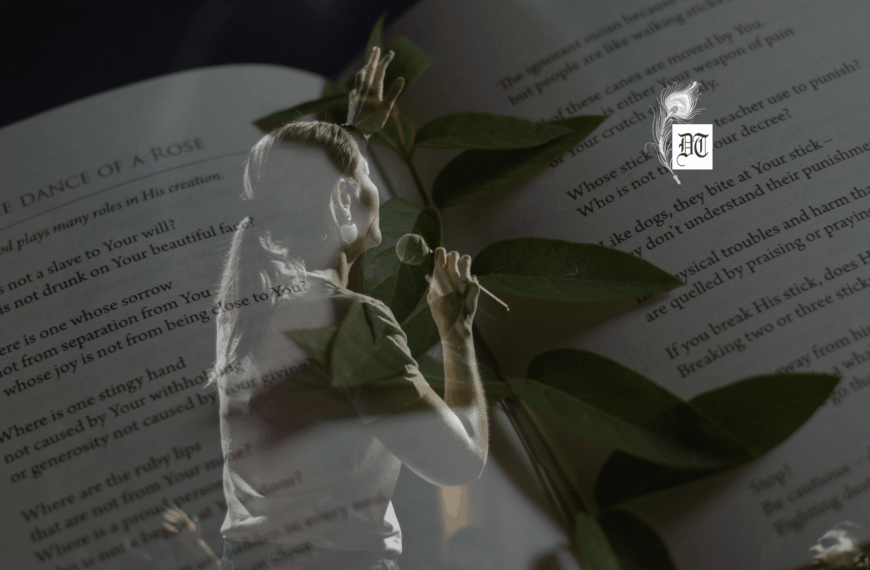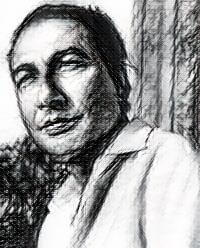Shabir reviews Lopamudra Banerjee’s book, The Broken Home and Other Stories, exclusively in Different Truths. Despite a dual handicap, her translation did not leave a bitter taste. However, he cites another translation, Haimonti that does not suffer from hesitancy or reluctance. The reading makes one ask for more of Lopa’s Tagore.
I, for one, do not like translations. Most of them have left a bitter taste. So I started reading, The Broken Home and other Stories, English translation of Rabindranath Tagore’s two Bengali novellas and six short stories by Lopamudra (Lopa) Banerjee, with a bias. And that was not the only thing against my reading of The Broken Home and Other Stories, I also cannot read Bengali; all I have read of Tagore are his English works (translated as well as original). So, all merit of this translated work, I was going to attribute to Rabindranath Tagore by default even if some portion of this merit might have been an outcome of Lopa’s diligence at translation. And any defect, even if it might have been carried over from the original and duly translated, I was going to ascribe to as her fault.
Despite this dual handicap, The Broken Home and Other Stories did not leave a bitter taste.
The first interesting thing to note about the book is its choice of the stories and novellas. As Lopa confesses in the Preface, her translation of the stories started with the serialised publication of Nastanirh (Broken Home) in Café Dissensus. And later she chose six other short stories and the novella, Laboratory for translation. Per se, the choice looks random but as Sigmund Freud would have said, our choices are not so random at all. Look carefully and you will see certain common threads in all the translated works. They all are built around a central female protagonist, who struggles against the patriarchal socio-cultural mores of her times. Even though the patriarchy gets better of her but she defies it and it is her defiance and struggle that sets up the story.
The female protagonists, though suffering and struggling, yet they emerge as strong individuals who resist the tyranny of their time in a sort of passive-aggression. For instance the final refusal o f her husband by Charu (Charulata), Nirupama’s and Haimonti’s death (Dena Paona and Haimonti) that is more of willful suicide than natural death, Giribala’s embrace of theatre and the adulation that came with it, Sohini’s defiance of the taboos and norms of her society etc. and if you compare this with the profile of Lopa that emerges from Thwarted Escape (previously published memoir of Lopa) you would suddenly see that there is no randomness in the choice of these stories for translation. Much like the Charu, Uma, Nirupama, Haimonti, and Sohini; Lopa had to struggle and defy a patriarchal society and its choking hold over her individuality. Thus the choice was natural, she identified with these stories and most probably was looking for herself in them. Then there is also the fact that in five out of these eight stories (the exceptions being Dena Paona, Laboratory and Subha) art has a role to play in the defiance and escapism of the central female protagonist; be it Charulata’s literary endeavours, Haimont’s letters to her father, Giribala’s eventual transformation into a stage actress, Nirjharini’s stories or little Uma’s tentative scribblings in and outside her notebook- art has been presented as one of the few emancipative and positive channels of expression and liberation of the female protagonists. This again has parallels in the person of Lopa. Literature and music have been her two life-long media of catharsis and emancipation. So the selected stories and their translator have found a supplement and complement in each other. Lopa’s success as a translator, thus, is a direct outcome of this mutual-bonding.
f her husband by Charu (Charulata), Nirupama’s and Haimonti’s death (Dena Paona and Haimonti) that is more of willful suicide than natural death, Giribala’s embrace of theatre and the adulation that came with it, Sohini’s defiance of the taboos and norms of her society etc. and if you compare this with the profile of Lopa that emerges from Thwarted Escape (previously published memoir of Lopa) you would suddenly see that there is no randomness in the choice of these stories for translation. Much like the Charu, Uma, Nirupama, Haimonti, and Sohini; Lopa had to struggle and defy a patriarchal society and its choking hold over her individuality. Thus the choice was natural, she identified with these stories and most probably was looking for herself in them. Then there is also the fact that in five out of these eight stories (the exceptions being Dena Paona, Laboratory and Subha) art has a role to play in the defiance and escapism of the central female protagonist; be it Charulata’s literary endeavours, Haimont’s letters to her father, Giribala’s eventual transformation into a stage actress, Nirjharini’s stories or little Uma’s tentative scribblings in and outside her notebook- art has been presented as one of the few emancipative and positive channels of expression and liberation of the female protagonists. This again has parallels in the person of Lopa. Literature and music have been her two life-long media of catharsis and emancipation. So the selected stories and their translator have found a supplement and complement in each other. Lopa’s success as a translator, thus, is a direct outcome of this mutual-bonding.
 Coming to the semantics of this work, Lopa is a native Bengali as well as a poet and prose writer herself. This should have been an advantage while translating works from Bengali to English, but in the present case, it has led to a peculiar problem. If you consider Lopa’s poetry, her forte is the sensuality of her language and images as a logical extension of her extremely sensitive and self-aware feminine persona. Her poetry often spills over into her prose as well. But in translating Tagore, she appears at a loss. Take for instance, this paragraph, from Nastanirh: “At a time when the pristine sunlight of the exploration of love between a man and a woman would let them unfold each other in a new, rejuvenating light, the man and the woman, unconscious of the golden, glistening dawn of their mutual love, didn’t realise when the fresh aroma of togetherness had worn off, leaving them older, dull, over-familiar to each other.”
Coming to the semantics of this work, Lopa is a native Bengali as well as a poet and prose writer herself. This should have been an advantage while translating works from Bengali to English, but in the present case, it has led to a peculiar problem. If you consider Lopa’s poetry, her forte is the sensuality of her language and images as a logical extension of her extremely sensitive and self-aware feminine persona. Her poetry often spills over into her prose as well. But in translating Tagore, she appears at a loss. Take for instance, this paragraph, from Nastanirh: “At a time when the pristine sunlight of the exploration of love between a man and a woman would let them unfold each other in a new, rejuvenating light, the man and the woman, unconscious of the golden, glistening dawn of their mutual love, didn’t realise when the fresh aroma of togetherness had worn off, leaving them older, dull, over-familiar to each other.”
Despite the subtle assonance and consonance at the display, this paragraph speaks of unsureness of the writer. There is no sensory appreciation of the images and hence the corresponding incoherence of the images. A series of dazzling images of bright sunlight, dawn, dusk, sun, etc. are projected in the head of the reader but the reader fails to make sense of them or connect them to the wider elongated metaphor. Similarly, in the same story, the brief exchange of enjambments between Amal and Charulata, while imagining the surreal garden must have had the poetic finesse and melody of a duet in the original Bengali but in translation, they have been reduced to a mere mechanical exchange.
Not that Lopa is not capable otherwise. As already mentioned her poetry and lyrical prose is ample evidence of her prowess as a wordsmith, who can elevate language to a sensory feast. But why this hesitancy then? This reluctance? Why it is then that Lopa has restrained her pen? Is it because of the intimidation of the translator by the legend and reputation of Tagore? And that is understandable when you are translating a man whose words have been brewed to the perfect intoxication of mellifluous ecstasy, what else can you do but feel intimidated? Add to that the fact that being a native Bengali, she must have been conditioned from her very childhood to consider words of Tagore as holy manna. Any attempt to disfigure them would naturally be a sacrilege. And consequently, Lopa, while translating Tagore, must have consciously or sub-consciously held back any improvisation or transliteration and instead has preferred a mechanical translation of Tagore, trying all the time to be as faithful to the original text as possible. While such a perspective works most of the times but wherever Tagore unleashes his poetry into his prose, such a translator is at loss of words. And this is not mere hypothesizing, one could see instances in The Broken Home and Other Stories, where Lopa, the poet, breaks free from Lopa, the translator, and gives us something exquisite to read. For instance:
“Thus, Charu built a clandestine tunnel inside the deep, dark trenches hidden beneath he r everyday world of domestic chores and responsibilities. In the pitch-dark of that soundless, uninhabited world, she had constructed her own sacred temple of tears and agony. Nobody in the world, not even her husband, had the right to enter that world.”
r everyday world of domestic chores and responsibilities. In the pitch-dark of that soundless, uninhabited world, she had constructed her own sacred temple of tears and agony. Nobody in the world, not even her husband, had the right to enter that world.”
(The Broken Home)
Or
“In the narrow alleys of Kolkata, I had discovered her silent words peeping through the window, addressing the silent sky.” (Haimonti)
There is no hesitancy here, no reluctance. Pity we don’t have more of it.
To conclude, The Broken Home and Other Stories is an immensely readable translation. And so much readable that by the end not only would the reader be asking for more of Tagore, but more of Lopa’s Tagore.
©Shabir Ahmad
Photos from the Internet
#BookReview #Translation #LopaMudraBanerjee #TheBrokenHomeAndOtherStories #Criticism #Tagore #BengaliWriter #DifferentTruths


 By
By
 By
By
